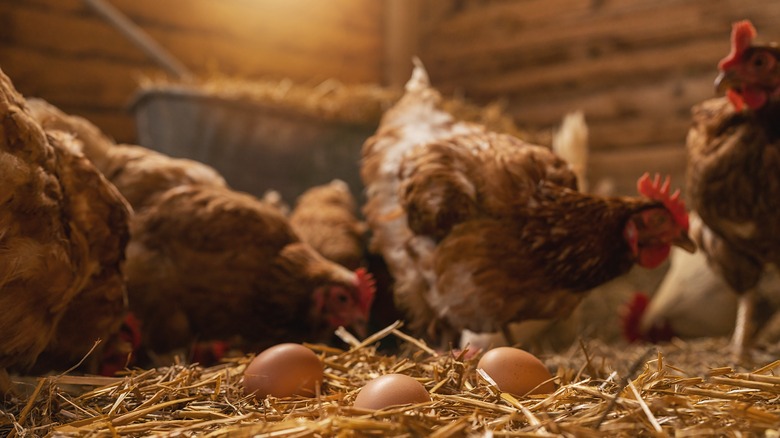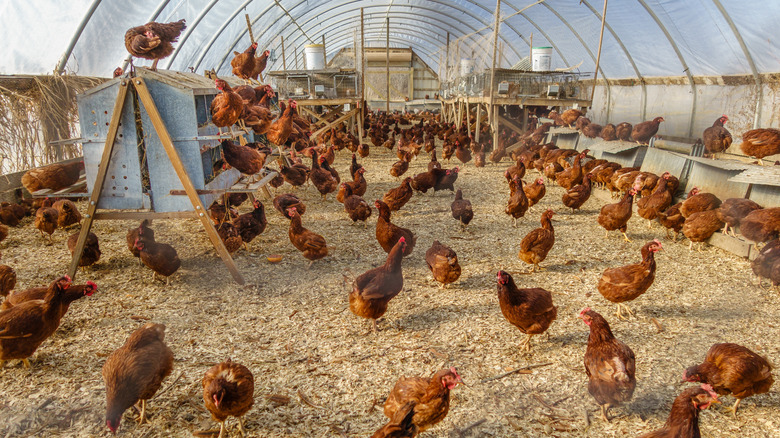The Fortuitous Origin Story Of The Chicken Industry
The chicken industry has become synonymous with factory farming in today's society. Chickens feed tens of millions of Americans daily, and our appetite for chicken has steadily grown over the years. According to Agricultural Economic Insights, total poultry consumption in the U.S. during the early 1970s was around 50 pounds, and by the early 2000s, consumption surpassed 100 pounds per person. Americans love poultry, from nuggets to wings to deep-fried and everything in between.
Historically, chickens were not raised by families for meat but for eggs. Chicken was rarely on the dinner table except for a special feature on a Sunday night or holiday celebration. The story of how chicken went from a rare guest star to the leading lady on tables across America is serendipitous. One would think that an industry so embedded in our society must have taken years of meticulous planning and strategy to bring to life, right? Wrong. The chicken industry was born from a mistake!
According to the National Chicken Council, Wilmer Steele and his wife Cecile of Ocean View, Delaware, are considered the pioneers of the modern-day broiler chicken industry. Cecile Steele was an average farmer, raising a simple farm to provide for her family. She kept a small flock of chickens to produce eggs and would slaughter them for meat once they were no longer laying many eggs. This was the typical way of doing things for most rural American families at the time. Then one day, by mistake, her life, her farm, and America changed forever.
Chicken takes over
The local chick hatchery made Cecile Steele's annual delivery of 50 chicks. Except the hatchery made a massive mistake, 500 chicks were delivered instead. More than ten times the amount Cecile Steele ordered (via The Birth of an Industry). Steele, unsure what to do with that many kept them all in a small barn heated by a coal oven. Even though more than 100 chicks died in the process, she sold the 387 healthy broiler birds she raised for a handsome profit. Steele could not believe it, selling her two-and-one-half-pound chickens at 62 cents per pound (which was five dollars a pound in 1998). Her wheels began turning, and the chicken industry was taking shape. It was 1923.
The following year, Cecile Steele ordered one thousand chicks. The business proved so lucrative that Steele's husband Wilmer quit his job and joined her on the farm full-time. It wasn't long before they were raising 10,000 chickens in 1926 by purchasing a broiler house (via The Happy Chicken Coop). Word traveled fast about this accessible, profitable business. It wasn't long before other farmers decided to expand their chicken-raising capacities and get in on the broiler chicken industry. The sky was the limit.
By the 1950s and 60s, chicken stopped being a luxury food and became a staple in the daily American diet. With so many chicken farms driving down the price, it quickly became a standard on tables across the country. Cecile Steele took the lemons life handed her and made lemonade that changed farming, forever.

